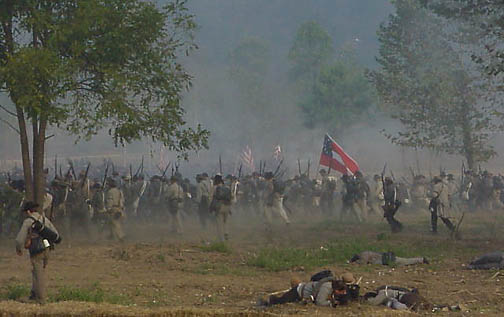

When General Joseph E. Johnston’s army abandoned the Warwick–Yorktown Line on May 3, 1862, the Confederates exposed the port city of Norfolk to Union capture. Norfolk was evacuated by the Confederates on May 9, and the Virginia, now without a base, was scuttled by its crew on May 11, 1862. The Virginia was the only obstacle to Union access to the James River. Accordingly, a Federal naval force, led by the ironclads Galena and Monitor, moved up the James River toward Richmond.
The Confederates hastily selected Drewry’s Bluff, seven miles below Richmond on a bend in the James River, as the best place to block this riverine path to the Confederate capital. Stone laden hulls were sunk in the river channel as obstructions and earthen Fort Darling was completed. Heavy guns were installed in the fort atop the 80–foot high bluff.
The Federal fleet, led by Commander John Rodgers, approached Drewry’s
Bluff on May 15, 1862. The channel obstructions blocked and limited the
maneuver of the Union ironclads. Neither the Galena nor the Monitor could
sufficiently elevate their guns to fire at the batteries on the bluff.
Rodgers moved the Galena into mid–stream to test the ironclad’s
capabilities under enemy fire. The Galena proved especially vulnerable to
Confederate shot during the 4–hour engagement. The ironclad was hit 18
times and suffered 13 casualties. Rodgers broke off the action and
retreated down the James River. The Confederate defense at Drewry’s Bluff
saved Richmond from capture by way of the James River.